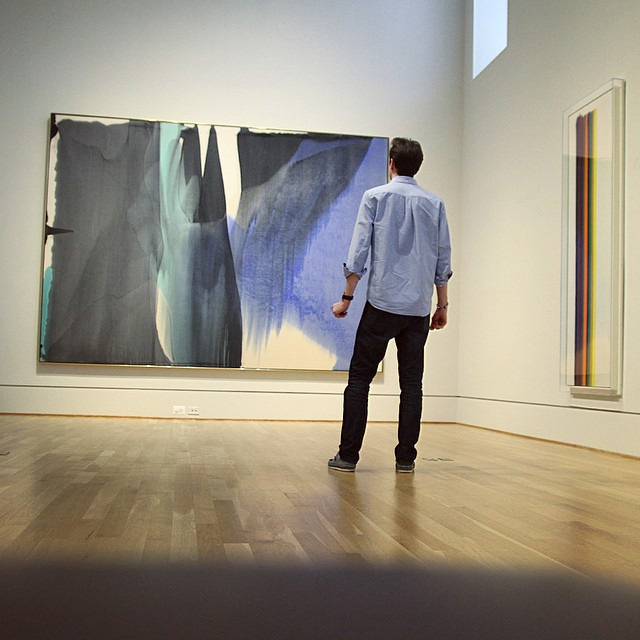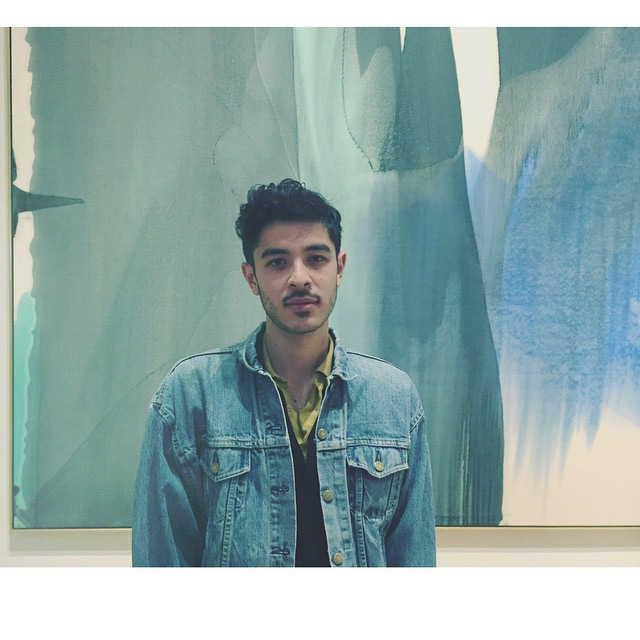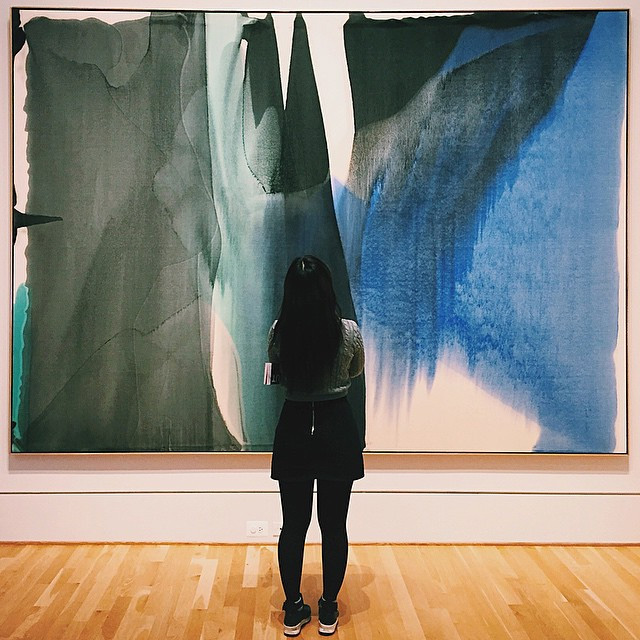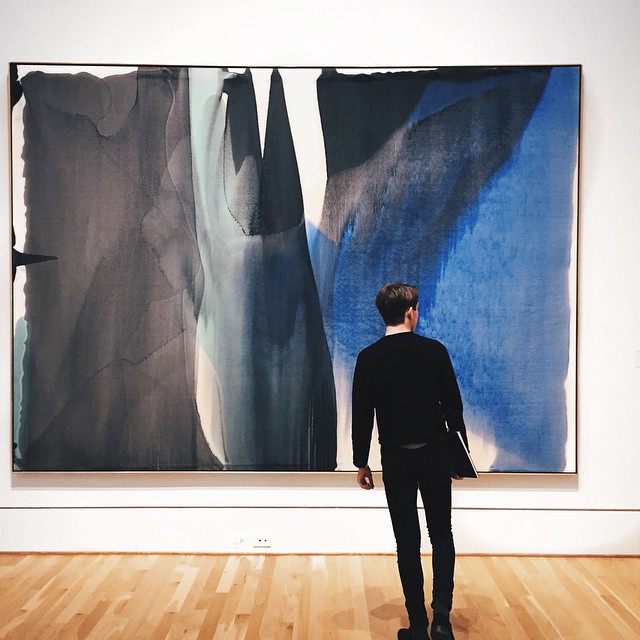
Morris Louis, Seal, 1959. Acrylic on canvas, 101-1/8 x 140-3/4 in. The Phillips Collection, Washington, D.C. Gift of Marcella Brenner Revocable Trust, 2011 ©1993 Marcella Louis Brenner
Last Thursday, I stood in front of Seal for the Spotlight Tour on Morris Louis, confronted with the colossal stretch of raw canvas covered in black, blue, and green paint, staring at the work in its overwhelming enormity and pondering the paradox presented by its name. I had joined the tour as Paul Ruther, Manager of Teacher Programs, was telling the story of how the painting, one of a series done for a New York gallery in 1959, was dubbed Seal by Clement Greenberg despite Louis’s aversion to naming his work.
Why Seal? Paul asked the group. I couldn’t help but think that “seal,” in its many meanings, represented exactly what Louis was trying to avoid with his nameless paintings, as his work was an attempt at art freed from illusion and association, art unmediated by narrative. I thought of a “seal” as an emblem, a symbol, a stamp; an adhesive, some binding substance. Does a name have the power to seal-off our response to a painting, to direct or limit our thoughts and emotions, to force us to find symbolism only where the name suggests it exists? Would this painting be better off unSealed?
However, “seal” proved to be as slippery a word as the animal it signifies, and its multitudinous meanings generated a series of thoughtful comments. The washes of black and gray swim amongst blues and greens: a partly-submerged seal. The paint, as Paul pointed out, is adhered to the raw canvas, “sealed” to it, forming not paint-on-canvas but a single object. Perhaps it doesn’t matter that the artist never intended to name his painting, for the associations we make are just one way we connect to his work.
I also couldn’t help but wonder about Louis’s mysterious methods, though apparently this type of speculation is often discouraged. What I did learn about this particular piece, though, is that the canvas was so large he never worked with it stretched, but curled, furled, twisted, and draped. I can only picture Louis, locked away in his room, canvas sprawled everywhere, maybe meditative, maybe frenzied, puffing through a pack of cigarettes and painting and painting, the finished piece a mystery even to its creator.
I think it may be the mystery itself that speaks so astutely to the creative process, and to the act of responding to or interpreting art. Artistic expression creates its own language; it speaks to the private, the hidden, the indescribable, and illogical, yet it somehow makes sense, as the motivation behind and responses to these works often transcend verbal description and enter the realm of the inexplicably universal, moving us in ways we cannot name. Despite the name of this painting and the associations it invites, we inevitably connect to it in ways we can’t quite articulate, our reactions a mystery even to us.
Amanda Hickok, Marketing Intern







